
Audience engagement activities can have a spillover effect on communities when audience members share their enthusiasm with others who did not attend. (Brown & Ratzkin, 2011, p. 29)
This article is a continuation from Audience Engagement: The Making of Meaning. The goal is to strategically design better audience experiences centered on media. To this end I provide a breakdown of the white paper, Making Sense of Audience Engagement. In my previous article I covered the Arc of Engagement and Impact Echo; now I will review the authors’ breakdown of Audience Typologies and The Audience Engagement Cycle as a way forward.
One caveat to get out of the way for this entire enterprise of audience engagement: the artistic media has to meet a certain basic threshold of quality and intrinsic depth relative to a target audience. My pitch for a holistic Audience Engagement Design does not supplant the need for a core artistic experience based on a quality piece of media. The purpose of the design is to extend the impact in the target audience, building True Fans who will ripple out to wider audiences.
For me the eye-opening moment of reading this paper came from the realization that there can be audience members who really enjoy a piece of media, and they have an artistic exchange with, but then when they go to have a deeper level of engagement, they find nothing to engage with. They move on then and their Arc of Engagement gets truncated minimizing the Impact Echo. What were they looking for and how did they get dropped off the Arc of Engagement?
Part 3: Audience Typologies
“There are people in it to be social, people who are there for art, for personal growth, and some want engagement on all levels.” -Marcia Lazer, Director of Marketing, San Francisco Opera
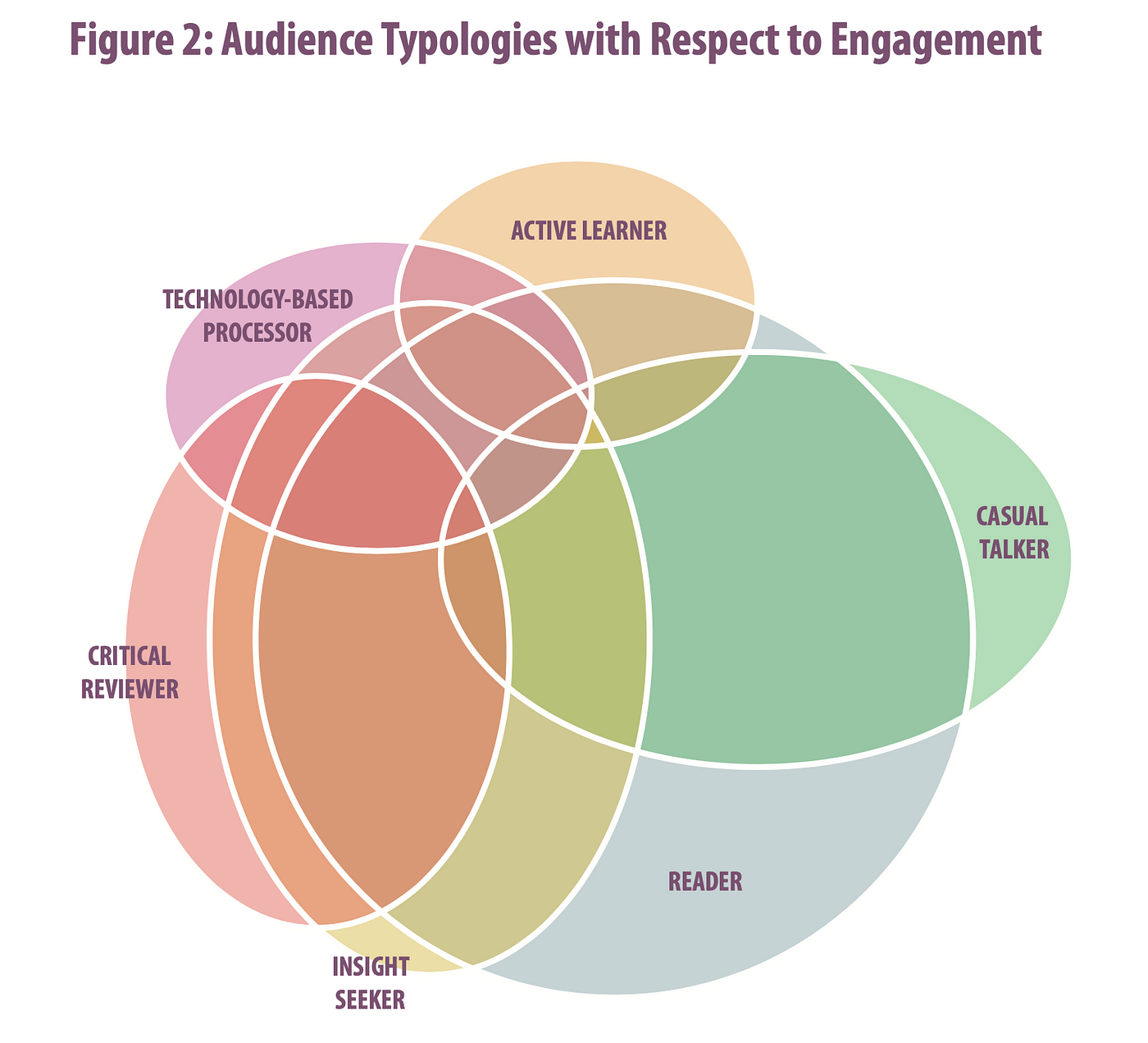
The Venn diagram illustrates six overlapping categories of audience members within a typical performing arts audience, defined by their overall appetite for engaging and their preferred methods of engagement. The six typologies are (in order of low appetite to high appetite): 1) Readers; 2) Critical Reviewers; 3) Casual Talkers; 4) Technology-based Processors; 5) Insight Seekers; and 6) Active Learners. (Brown & Ratzkin p. 23)
For practitioners of UX design and marketing, the concept of audience typologies will not be a foreign idea. It falls under the user persona toolset used in those fields. For many creators, producers, and distributors in the media industry though the mindset has been stuck for awhile on genres and the use of generalizations about how certain genres perform, and which demographic audiences gravitate to them. Compared to user personas this outmoded view of audiences seems one dimensional.
A key insight comes from acknowledging that even an audience for one genre of film or TV series will not have the same appetite or behaviors in regards to engagement with the piece. The role of the AXD Producer then becomes to ensure that engagement gets designed to serve each typology thereby providing a deeper more enriching experience.
Through the research and interviews by Brown and Ratzkin, six typologies for a typical performing arts audience were developed. There is enough overlap with film and media screenings to see a common audience behavior, however it does open the door to the idea of doing more specific user research on the modern media consumer in respect to engagement.
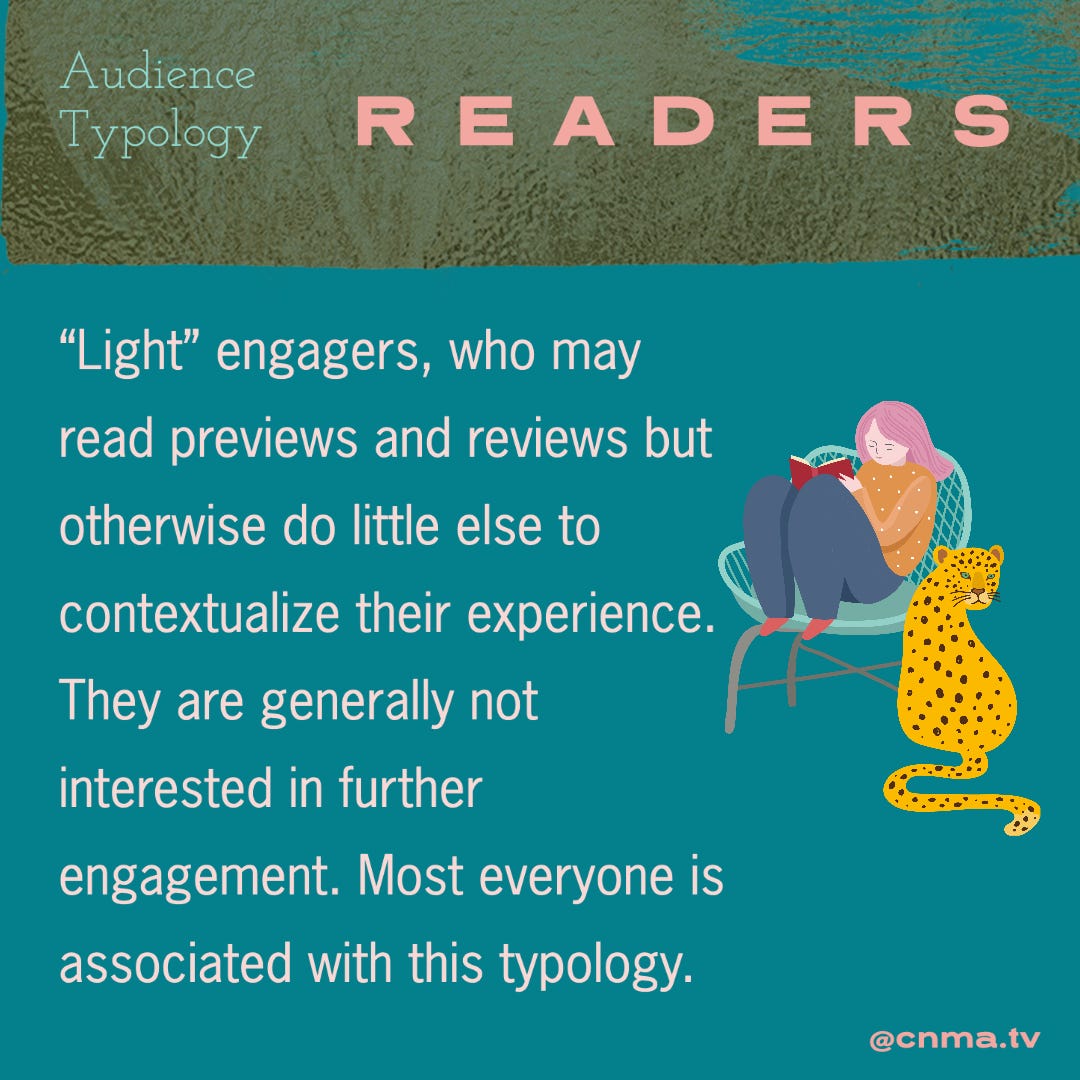
With the Reader typology encompassing most everyone the key strategy not to be missed is that all of the text and copy officially associated with a piece of media should not just be marketing but also starting to contextualize the piece for the audience. The Attention Economy is not just about why you should watch, but also why is everyone else watching or should be watching. I would also say that in media this typology would also incorporate Preview Watchers and those who might be attracted by Actor-Name-Recognition.
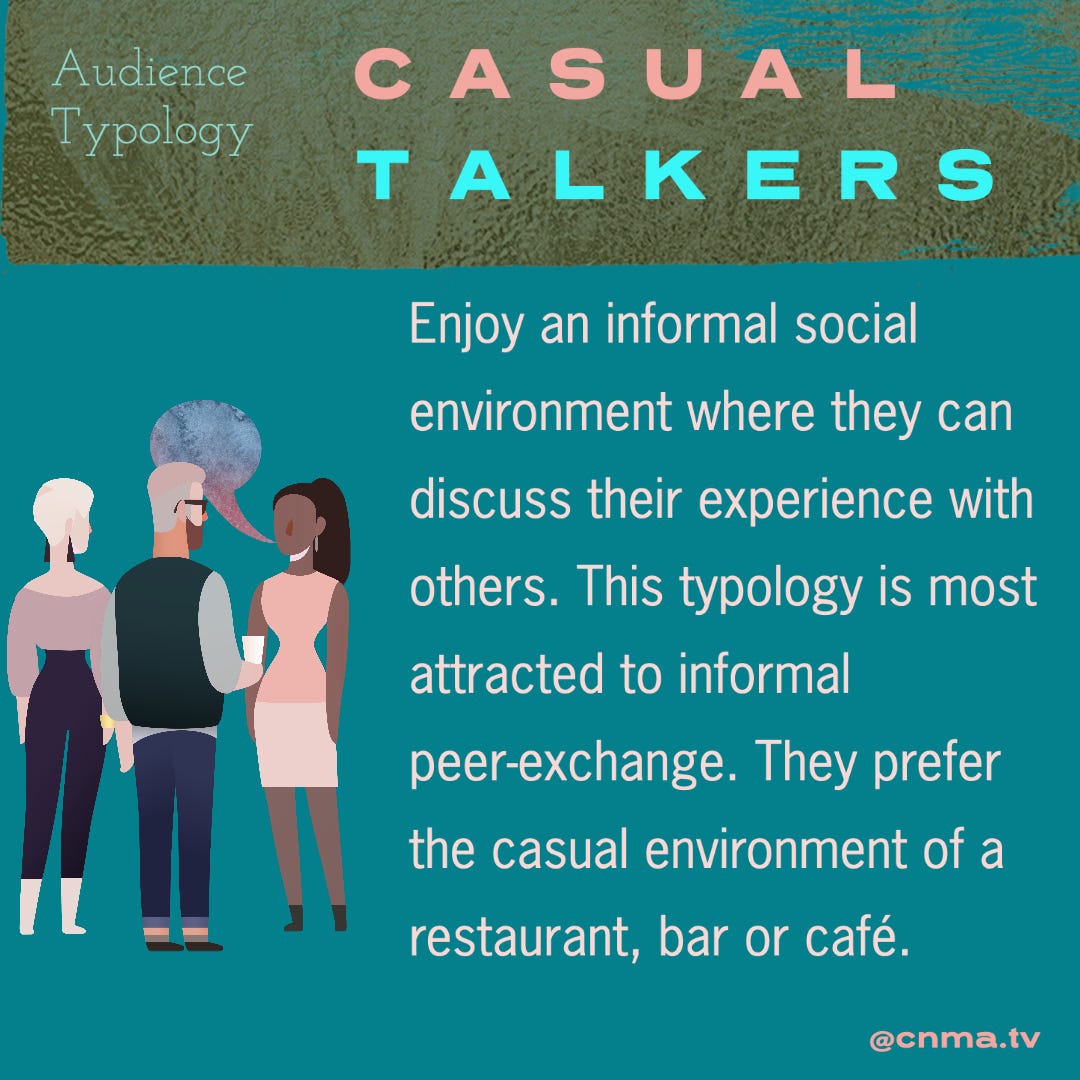
As opposed to thinking about the design for Audience Engagement as a tightly controlled experience, it can be viewed more like riding a wave. In this case more preparation, not less, allows for a more organic process of engagement that remains aligned with the artistic vision. When dealing with the Casual Talker audience, the point is not to force audience members to have a discussion, it is about understanding that these conversations will happen and asks if space been made for those conversations to spill into and where it will happen. What is the conversation the auteur wished to spark? This begins to show how an aligned strategy can payoff. Did the marketing and build-up materials lay the foundation for a post-viewing conversation, and the correct conversation?
Now by using the toolsets of audience journey mapping, we follow the audience experience into the proverbial lobby or bar conversation. By understanding how the casual conversation or discussion may go back and forth and what people may argue over there becomes a ripe opportunity for engagement in the ensuing micro-moment — who will be the first to pull out their phone to look up a piece of information about the film and what will they be searching for? This is where the AXD Producer has prepared material for additional contextualization and post-processing. When the audience searches, they find curated content to engage with.
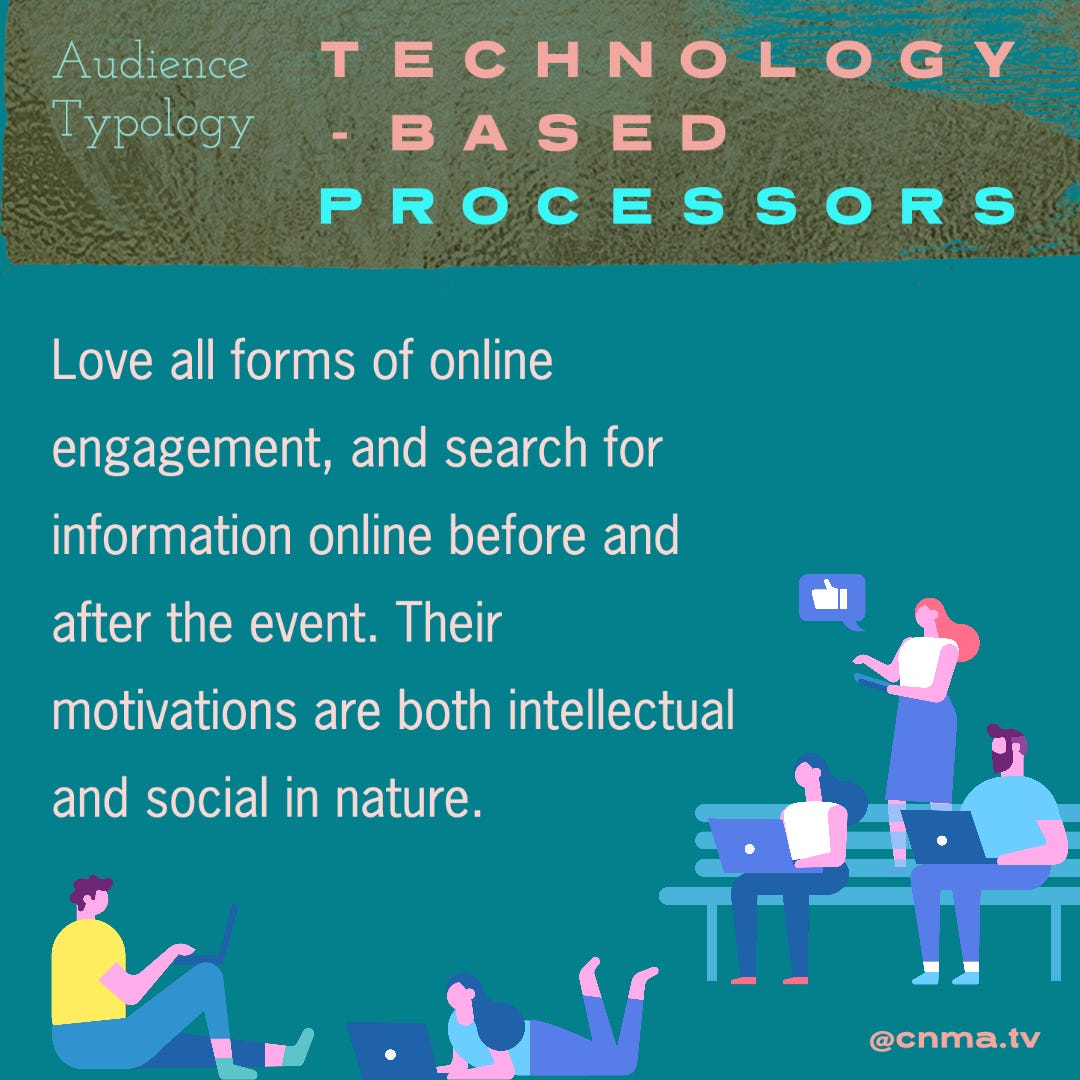
Across genres and mediums, when a piece of media achieves true Cultural Purchase, the engaged fans will begin to build and create upon the original work. It may start simply with written reviews but then progresses to fan art and fan fiction, cosplay, and even more generative work. These are all expressions of the impact the story and characters had on them as audiences. By understanding the Attention Economy, this expression by fans is a statement that they paid attention, and a simple acknowledgement by the creator in return showing some attention back can create a hyper-engagement.
With a holistic approach to audience engagement design, the time has come to raise the bar for online engagement from a templated indie film website that basically functions as well as a PDF. The AXD Producer leads a design process that organically develops the online engagement platform based on the original media itself and the target audience. Building a level of interactivity into the engagement means that communication becomes involved, and a dialogue builds a community, not just an audience.
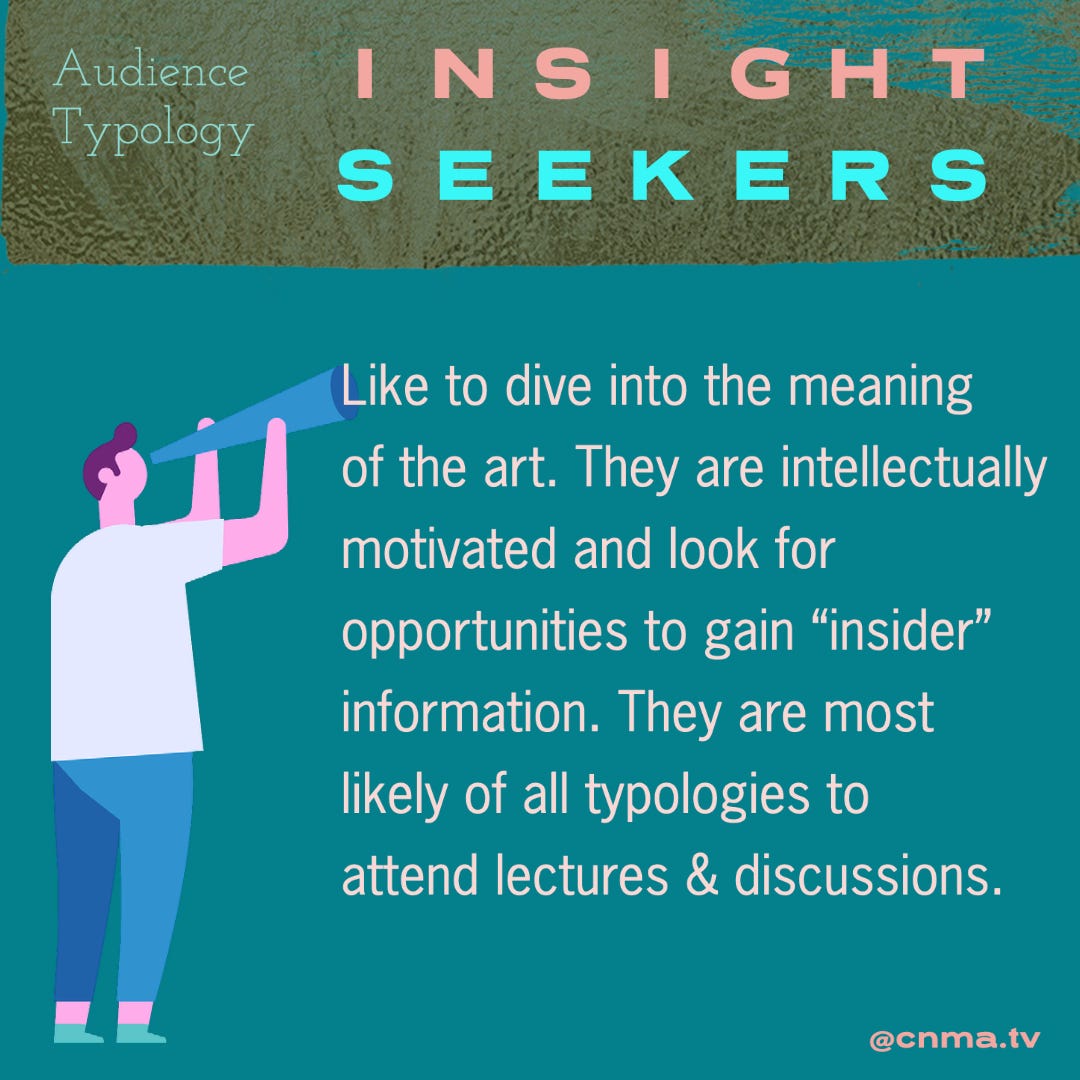
The film industry usually caters pretty well to this group by providing a range of interviews with the director, actors, cinematographer and creative department heads. The advent of behind-the-scenes footage also plays to this typology. More and more material usually builds up over time, but by and large it will be scattered across the internet or only available at live events.
The role of more strategic design becomes to consolidate and help audiences find the material. A strategic view early in pre-production can also identify unique aspect of the project that warrants more engagement after the fact to understand how that aspect was created. This can mean specially planned BTS shoots to capture that aspect and get interviews in the moment.

To fulfill this segment of the audience the application of public relations toolsets comes into play. This may start with press releases and early reviewer access, but it will hinge on building relationships with the third-party critics who review the work. As opposed to thinking that one must submit to the whims of critics, creators need to understand that with a proactive approach they can seed the conversation and contextualization that gets carried forward by critical reviews for weeks, months or even years.
In the current content creation cycle of the internet, different levels of writers, news organizations, and video bloggers will latch on to certain early messages and interview quotes and regurgitate those over and over. As a creator or AXD Producer, it is important to get ahead of that cycle by laying a foundation of messages and early interviews and understand that you are providing “sound bites” to drive the conversation.
At every phase the target audience persona can be referenced, but here especially is an opportunity to ask *what will the target audience find most interesting about the project and how can I highlight that? *With the early reviews you want to be speaking to the target audience of True Fans who will evangelize the project and contextualize it for everyone else. You do not need to convert a mass audience yet.
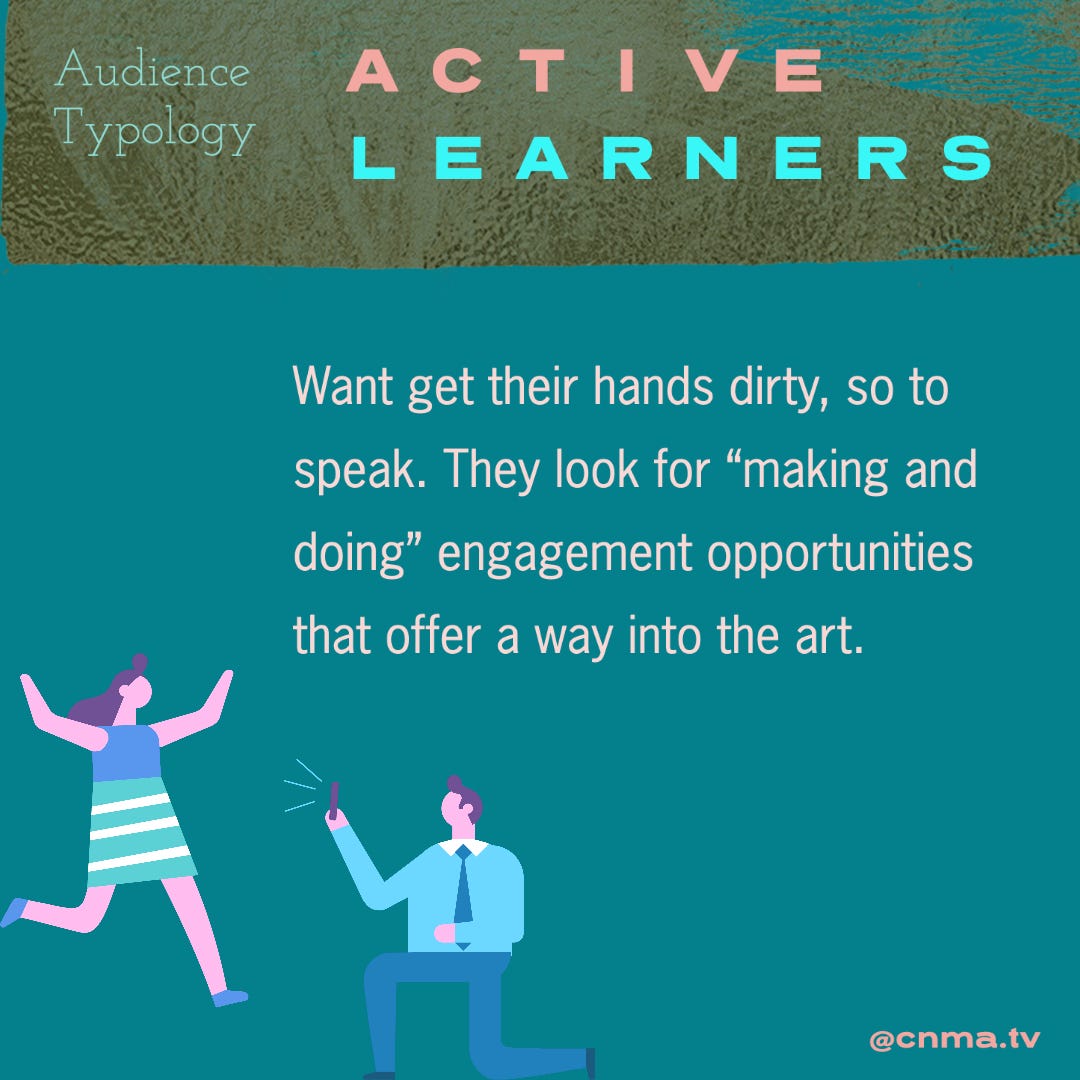
The Active Learner typology may apply less to filmmaking than performance or visual art, but the threshold gets lower and lower for everyone to practice the film craft with features and short films now able to be shot and edited right on phone. There may be distinct aspects of the project that engaged audience are interested in learning and recreating — VFX with Blender, cinematography, an editing technique, or perhaps blocking and acting out a scene.
Part 4: Towards Better Practice
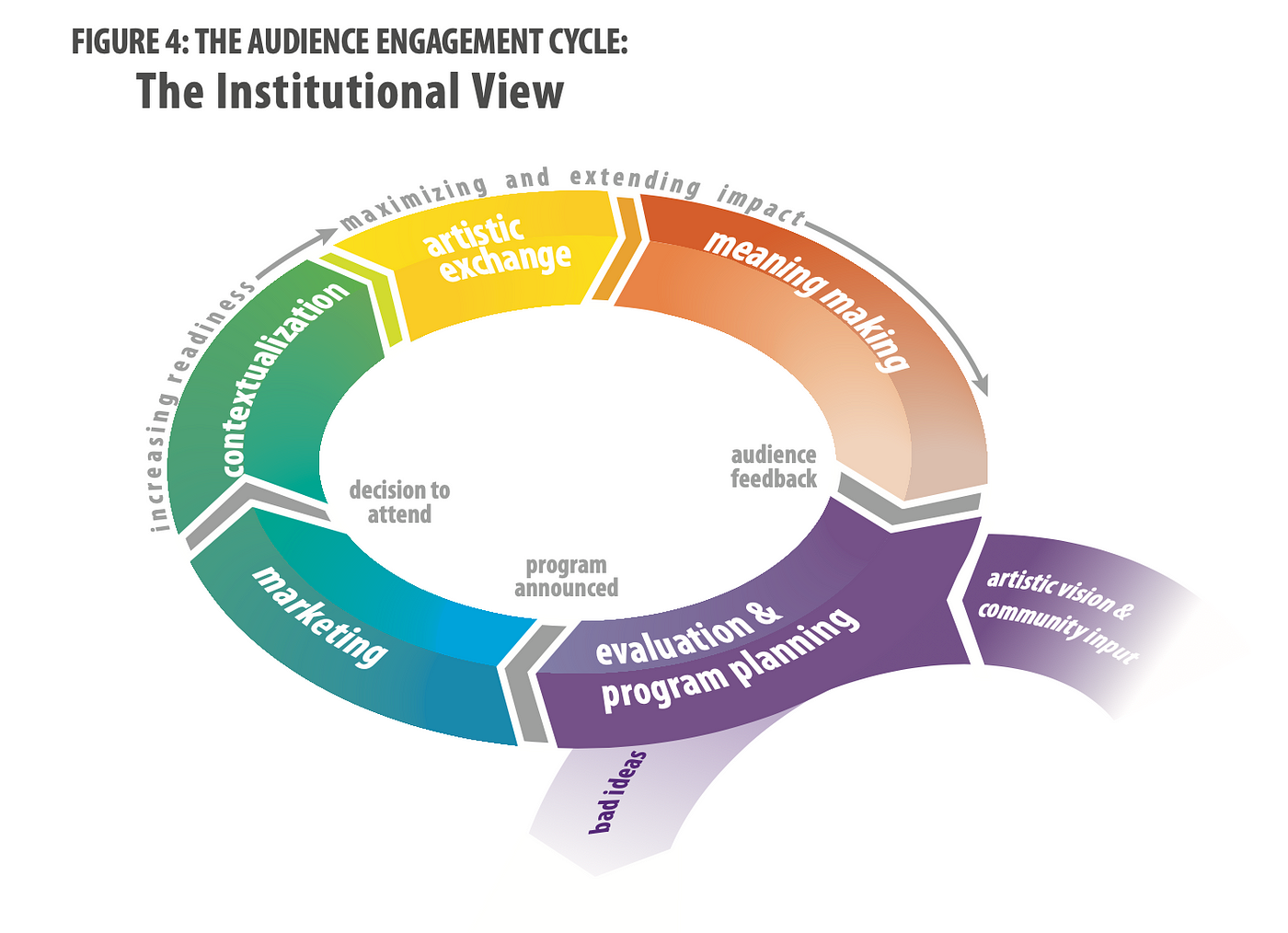
Designing, testing and implementing audience engagement programs is a process of aligning target audiences (i.e., typologies) with a wide array of formats and features. The overarching goal is to engage as many audience members as possible through one means or another. (Brown & Ratzkin, 2011, p. 30)
Narrative filmmaking has always primarily been a linear creation process — write, shoot, edit, distribute. If you get stuck in a linear mindset though, the full potential of engaging in a cyclical audience engagement process does not get unlocked. The authors propose an Audience Engagement Cycle (Figure 4) from the institutional view, as in an organization broader than an individual artist or storyteller. The institution keeps the audience engagement cycle going, bridging across projects from individual artists or creators. In the absence of an institution (studio, film festival, streaming network), an independent creator can engage an AXD Producer to provide the skills and knowledge to implement the audience engagement cycle around their projects or brand thereby helping them bridge discreet projects.
The path towards a better practice is to create a new Design System for Audience Engagement in Media. Nielsen Norman Group defines a Design System as: *a complete set of standards intended to manage design at scale using reusable components and patterns. *The Audience Engagement Cycle (figure 4) shows a pattern to model off of, and as stated in the first installment of this article, by pulling from the disciplines of marketing, UX design, curation, and public relations we can develop the toolsets within each phase.
Future articles will address how to develop this design system for film & new media audiences, and which tools can be used in each phase:
-
Evaluation & Planning
-
Marketing
-
Contextualization
-
Artistic Exchange
-
Meaning Making
To be the first to read the new essays, follow me here on Mirror and subscribe at c.mirror.xyz, or on twitter @codygallo.
Sources:
Brown, A. S., & Ratzkin, R. (2011, August). Making sense of audience engagement. The San Francisco Foundation.
Fessenden, T. (2021, April 11). Design Systems 101. Nielsen Norman Group.